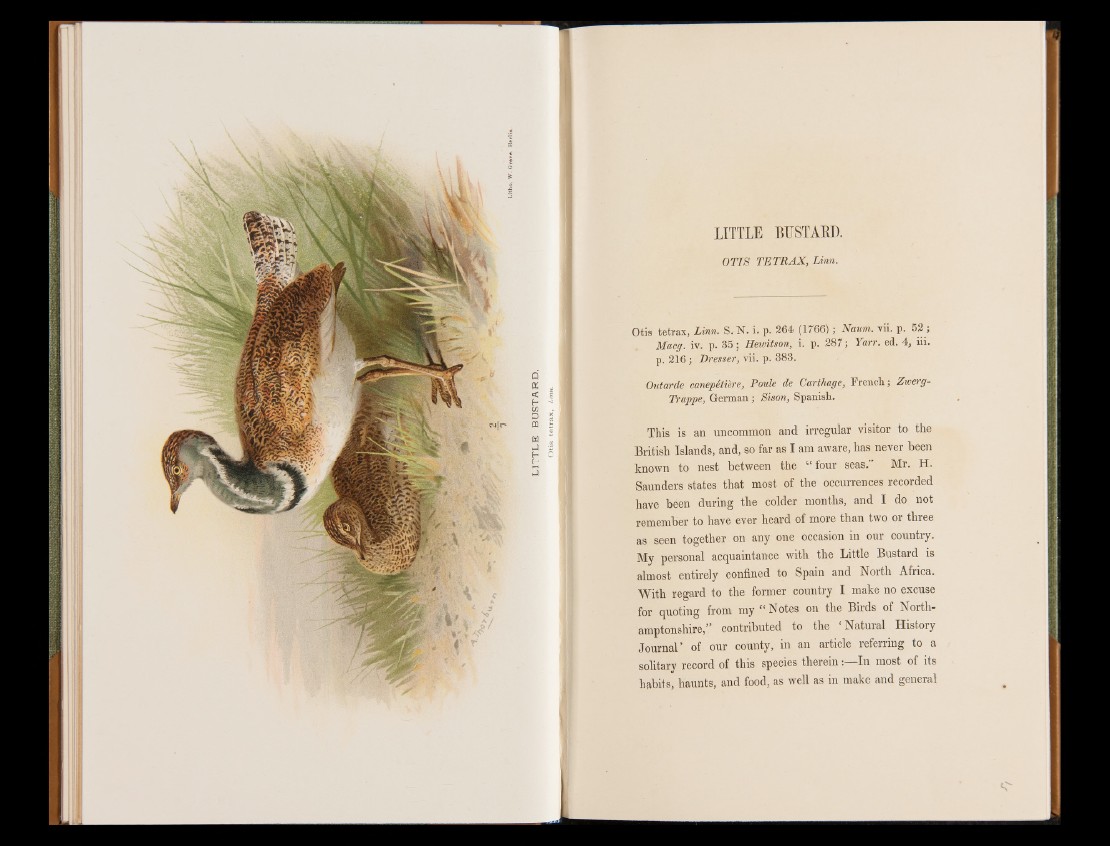
L IT T L E B U S T A R D .
LITTLE BUSTAKD.
OTIS TETRAX, Linn.
Otis tetrax, Linn. S. N. i. p. 264 (1766); Naum. vii. p. 52;
Macg. iv. p. 35 j Hewitson, i. p. 287; Yaw. ed. 4, iii.
p. 216; Dresser, vii. p. 383.
Outarde canepetiere, Poule de Carthage, French; Zwerg-
Trappe, German ; Sison, Spanish.
This is an uncommon and irregular visitor to the
British Islands, and, so far as I am aware, has never been
known to nest between the “ four seas.” Mr. H.
Saunders states that most of the occurrences recorded
have been during the colder months, and I do not
remember to have ever heard of more than two or three
as seen together on any one occasion in our country.
My personal acquaintance with the Little Bustard is
almost entirely confined to Spain and North Africa.
With regard to the former country I make no excuse
for quoting from my “ Notes on the Birds of Northamptonshire,”
contributed to the ‘Natural History
Journal’ of our county, in an article referring to a
solitary record of this species t h e r e i n I n most of its
habits, haunts, and food, as well as in make and general